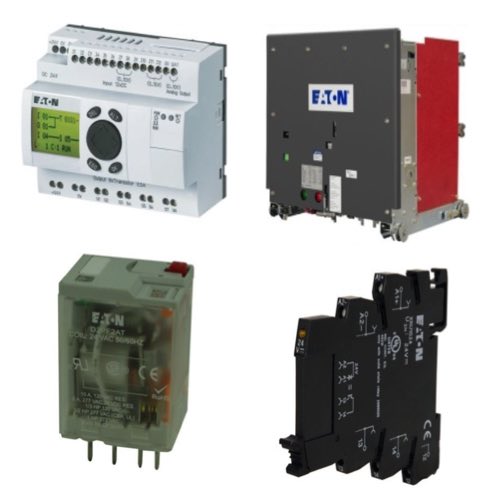Eaton Electromechanical Relays

RSP Supply carries a full line of Eaton electromechanical relays, including plug-in, module, and terminal block styles designed for reliable performance in industrial and commercial applications. Eaton relays provide dependable electrical switching for control systems, automation, and power management, ensuring safe and efficient operation across a wide range of environments.
Built for precision and endurance, Eaton electromechanical relays are used to control and protect electrical circuits by switching them on or off in response to control signals. Their robust design offers long mechanical life and resistance to harsh operating conditions, including vibration, temperature fluctuations, and electrical noise. Eaton relays are available in multiple configurations, power relays, time-delay relays, and control relays, each offering surge protection and noise suppression to safeguard sensitive components from electrical interference. Their modular construction and flexible mounting options make installation simple and integration seamless within existing systems.
Whether used for automation sequences, circuit protection, or signal switching, Eaton relays deliver reliable performance and versatile functionality for industrial processes, HVAC systems, and machine controls.
FAQs
Q: What are Eaton electromechanical relays used for?
Eaton electromechanical relays are used to switch electrical circuits on and off in power management, control, and automation systems.
Q: What types of relays does Eaton offer?
Eaton offers plug-in, module, and terminal block relays, including power, control, and time-delay relays to suit a wide range of applications.
Q: Are Eaton electromechanical relays durable enough for harsh environments?
Yes. They are built to withstand vibration, temperature changes, and electrical interference, ensuring long service life and consistent performance.
Q: Do Eaton relays include surge protection features?
Yes. Many Eaton relays include surge protection and noise suppression to prevent damage caused by voltage spikes or electrical noise.
Q: Can Eaton relays be easily integrated into existing control panels?
Yes. With flexible mounting and terminal configurations, Eaton relays are easy to install and integrate into new or existing control systems.
Why Buy Eaton Electromechanical Relays from RSP Supply
RSP Supply provides a complete selection of Eaton electromechanical relays with competitive pricing, fast shipping, and expert customer support. Whether you need plug-in, module, or terminal block relays, our team can help you select the right solution for your system. Choose RSP Supply for reliable Eaton components and trusted service that keeps your operations running smoothly.

